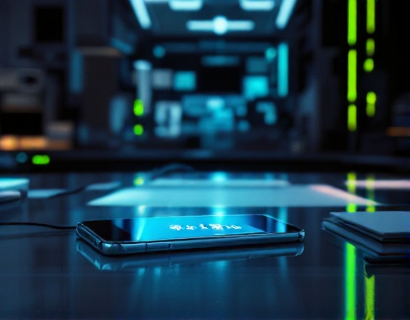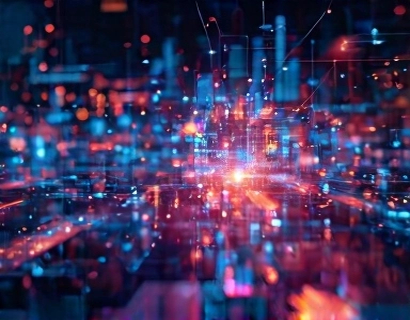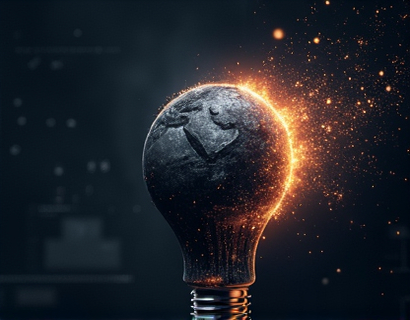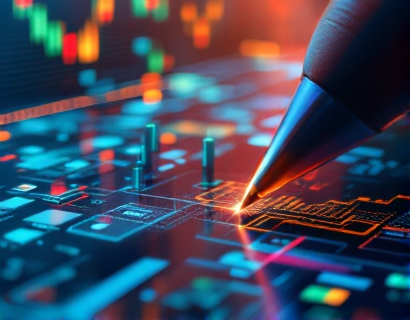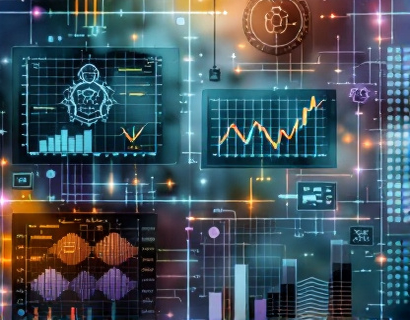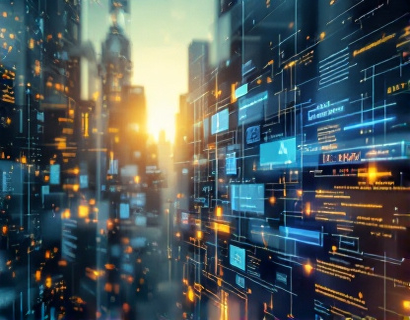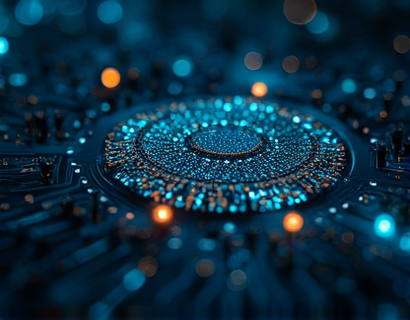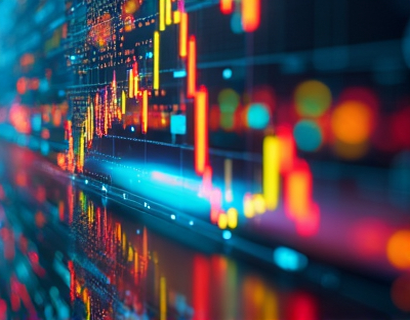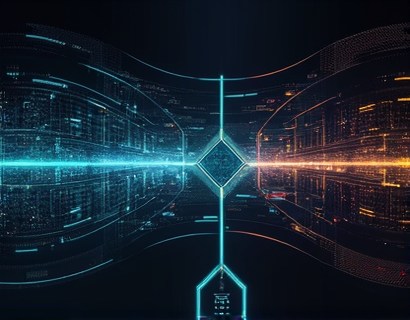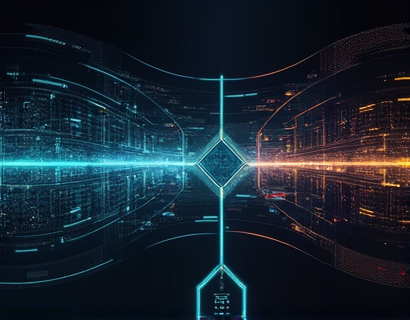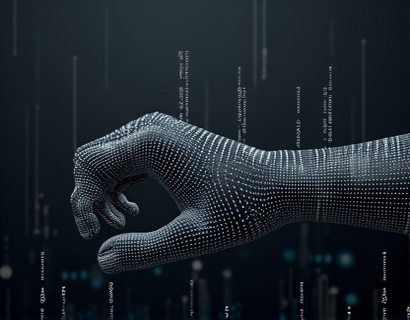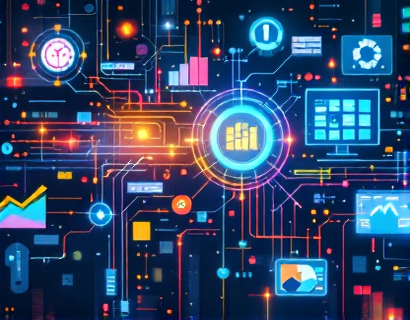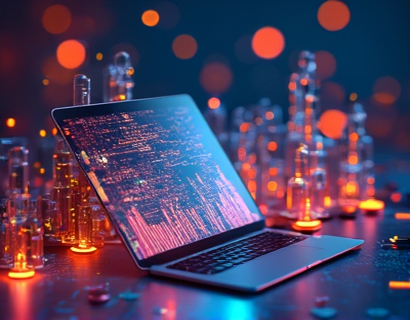The Synergy of AI and Crypto: Revolutionizing Digital Experiences in the Decentralized Economy
The intersection of artificial intelligence (AI) and cryptocurrency is giving rise to a new era of digital transformation. This synergy is not just a technological curiosity but a powerful force reshaping the way we interact with digital services and platforms. As we delve into this topic, it's essential to understand the foundational technologies driving this change and how they are intertwining to create more secure, efficient, and user-centric experiences.
The decentralized economy, powered by blockchain technology, has already disrupted traditional industries by introducing transparency, security, and decentralization. When AI is integrated into this ecosystem, the potential for innovation becomes even more profound. AI's ability to process vast amounts of data, learn from patterns, and make intelligent decisions complements blockchain's strengths in creating trustless and autonomous systems.
Foundations of AI and Blockchain
To fully appreciate the synergy between AI and blockchain, let's briefly explore each technology individually. Artificial intelligence encompasses a range of techniques and algorithms designed to simulate human intelligence in machines. These include machine learning, natural language processing, computer vision, and more. AI's primary goal is to enable machines to perform tasks that traditionally required human intervention, often with greater efficiency and accuracy.
Blockchain, on the other hand, is a distributed ledger technology that ensures data integrity and security through cryptographic hashing and consensus mechanisms. It allows for the creation of decentralized networks where transactions are recorded transparently and immutably. This technology has been most famously associated with cryptocurrencies like Bitcoin and Ethereum, but its applications extend far beyond digital currencies to include supply chain management, identity verification, and smart contracts.
Enhancing Security with AI and Blockchain
One of the most significant benefits of combining AI and blockchain is the enhancement of security measures. Blockchain's inherent security features, such as immutability and decentralization, are bolstered by AI's advanced threat detection capabilities. AI algorithms can analyze patterns in blockchain data to identify and mitigate potential security risks in real-time. For instance, machine learning models can detect unusual transaction patterns that may indicate fraudulent activity, allowing for immediate intervention.
Moreover, AI can improve the security of smart contracts, which are self-executing contracts with the terms directly written into code. By analyzing the code and identifying vulnerabilities, AI can help prevent exploits and ensure that smart contracts function as intended. This integration not only enhances the security of decentralized applications but also builds greater trust among users who are increasingly concerned about data privacy and security.
Optimizing User Experiences through AI
The decentralized economy is not just about security; it's also about creating seamless and personalized user experiences. AI plays a crucial role in this aspect by enabling platforms to understand user preferences and behaviors. Through natural language processing and machine learning, AI can analyze user interactions and provide tailored recommendations, making services more intuitive and user-friendly.
For example, in decentralized finance (DeFi) platforms, AI can help users find the best lending and borrowing opportunities based on their risk tolerance and financial goals. Similarly, in decentralized marketplaces, AI-driven chatbots can assist users in navigating complex transactions and providing real-time support. These AI-powered tools not only enhance the user experience but also increase the adoption and usability of decentralized applications.
Efficiency and Automation in Decentralized Systems
AI and blockchain together can significantly improve the efficiency of decentralized systems. One of the key areas where this synergy shines is in the automation of processes. Smart contracts, when combined with AI, can execute complex tasks with minimal human intervention. For instance, AI can be used to dynamically adjust the parameters of a smart contract based on real-time data, ensuring that the contract remains optimal and responsive to changing conditions.
Another area of efficiency is in data management. Blockchain's distributed nature can generate vast amounts of data, and AI can help in processing and analyzing this data to extract valuable insights. This combination can lead to more informed decision-making and better resource allocation within decentralized networks. For example, in supply chain management, AI can optimize inventory levels and predict demand based on blockchain-verified data, reducing waste and improving efficiency.
Innovative Business Models and Tokenomics
The integration of AI and blockchain is also giving birth to new business models and tokenomics. Tokenized assets, enabled by blockchain, can be enhanced with AI to create more dynamic and responsive economic systems. AI can analyze market trends and user behavior to adjust token prices and distribution mechanisms, ensuring that they remain fair and aligned with market conditions.
Furthermore, AI can help in the creation of decentralized autonomous organizations (DAOs) that operate more efficiently and democratically. By leveraging AI for decision-making and governance, DAOs can make more informed and data-driven choices, reducing the risk of human bias and increasing transparency. This synergy can lead to the development of more robust and sustainable decentralized communities.
Challenges and Considerations
While the potential of AI and blockchain synergy is immense, there are several challenges that need to be addressed. One of the primary concerns is the scalability of blockchain networks. As the number of transactions increases, blockchain can become slow and expensive, which can hinder the real-time capabilities of AI applications. Solutions such as layer 2 protocols and sharding are being developed to address these issues, but they require further refinement and adoption.
Another challenge is the regulatory landscape. The combination of AI and blockchain operates in a relatively uncharted legal territory, and regulations can vary significantly across different jurisdictions. Ensuring compliance while maintaining the decentralized and autonomous nature of these technologies is a complex task that requires collaboration between technologists, legal experts, and policymakers.
Future Prospects and Opportunities
Looking ahead, the synergy between AI and blockchain is poised to unlock numerous opportunities across various industries. In healthcare, AI-driven analytics on blockchain-based medical records can lead to more personalized and secure patient care. In the entertainment industry, AI can enhance content creation and distribution through decentralized platforms, giving creators more control and better monetization options.
The financial sector stands to benefit greatly from this combination, with AI-powered trading algorithms on decentralized exchanges and AI-enhanced KYC (Know Your Customer) processes on blockchain-based identity verification systems. The potential for innovation is vast, and as more developers and businesses recognize the value of this synergy, we can expect to see a surge in new applications and services.
In conclusion, the fusion of AI and blockchain is not just a technological trend but a transformative force that is redefining digital experiences in the decentralized economy. By enhancing security, optimizing user experiences, improving efficiency, and creating innovative business models, this synergy is paving the way for a more secure, efficient, and user-centric future. As tech professionals and enthusiasts, embracing this synergy will be crucial in navigating and thriving in the evolving tech landscape.



